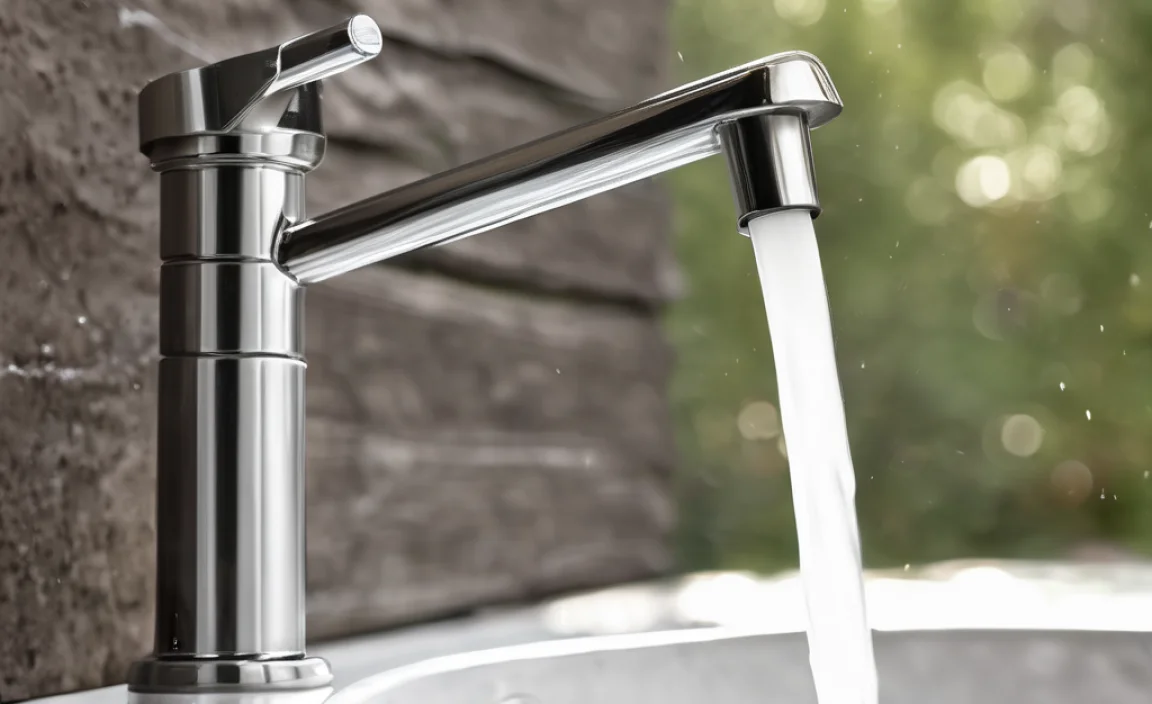Refinishing a sink is easier than you think! With a good cleaning, some sandpaper, and a quality refinishing kit, you can give your old sink a brand-new look. This saves you money and keeps your old sink out of the landfill. Just follow these steps for a fresh, durable finish that lasts.
Is your sink looking a little worse for wear? Maybe it’s chipped, stained, or just plain old. You don’t need to replace it! Refinishing is a simple and budget-friendly way to give your sink a makeover. It’s a lot less expensive than buying a new sink, and it’s a great way to reduce waste.
Ready to learn how? I’ll walk you through each step, from prepping the surface to applying the final coat. Let’s get started and make that sink shine again!
What You’ll Need to Refinish Your Sink
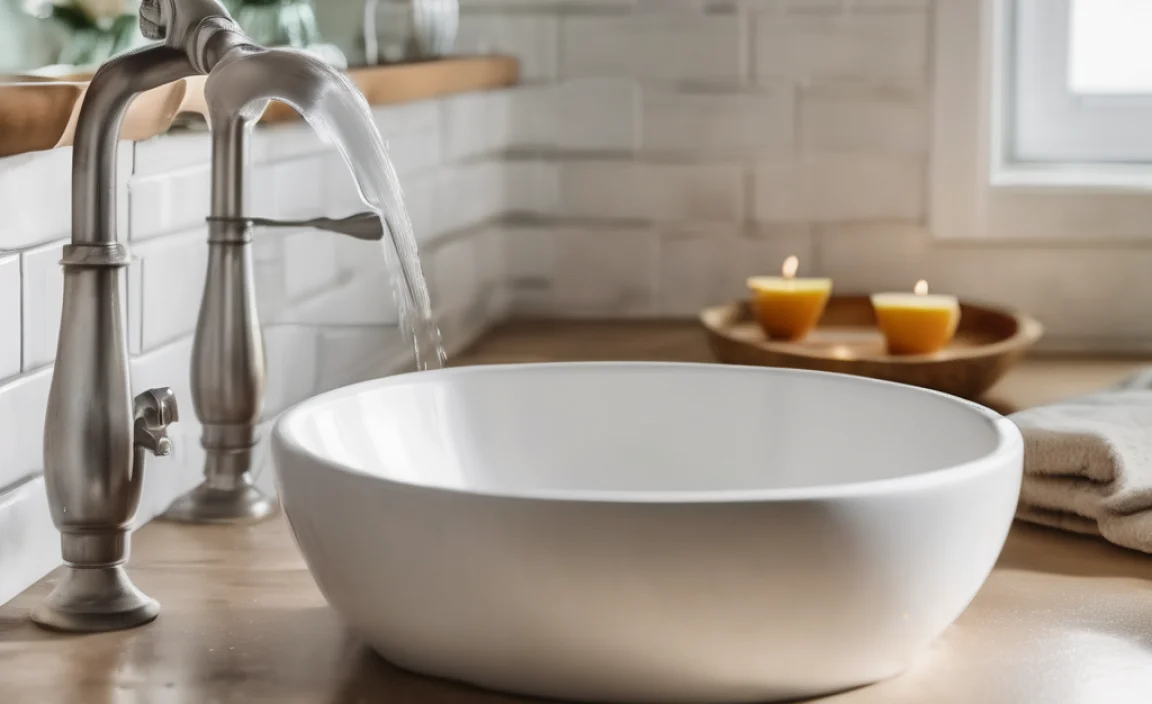
Before you start, gather all your supplies. Having everything on hand will make the process smoother and faster.
- Refinishing Kit: Choose a kit specifically designed for sinks. Epoxy or acrylic-urethane kits are popular choices.
- Cleaning Supplies: Heavy-duty cleaner, scouring pads, and tack cloth.
- Sandpaper: Coarse (80-grit), medium (220-grit), and fine (400-grit) sandpaper.
- Safety Gear: Safety glasses, gloves, and a respirator mask.
- Application Tools: Foam rollers, paint brushes (as specified in your kit), and a paint tray.
- Painter’s Tape: To protect surrounding surfaces.
- Drop Cloth: To protect the floor.
- Ventilation: A fan to circulate air and open windows.
- Filler (Optional): For repairing chips or cracks.
Step-by-Step Guide: Refinishing Your Sink
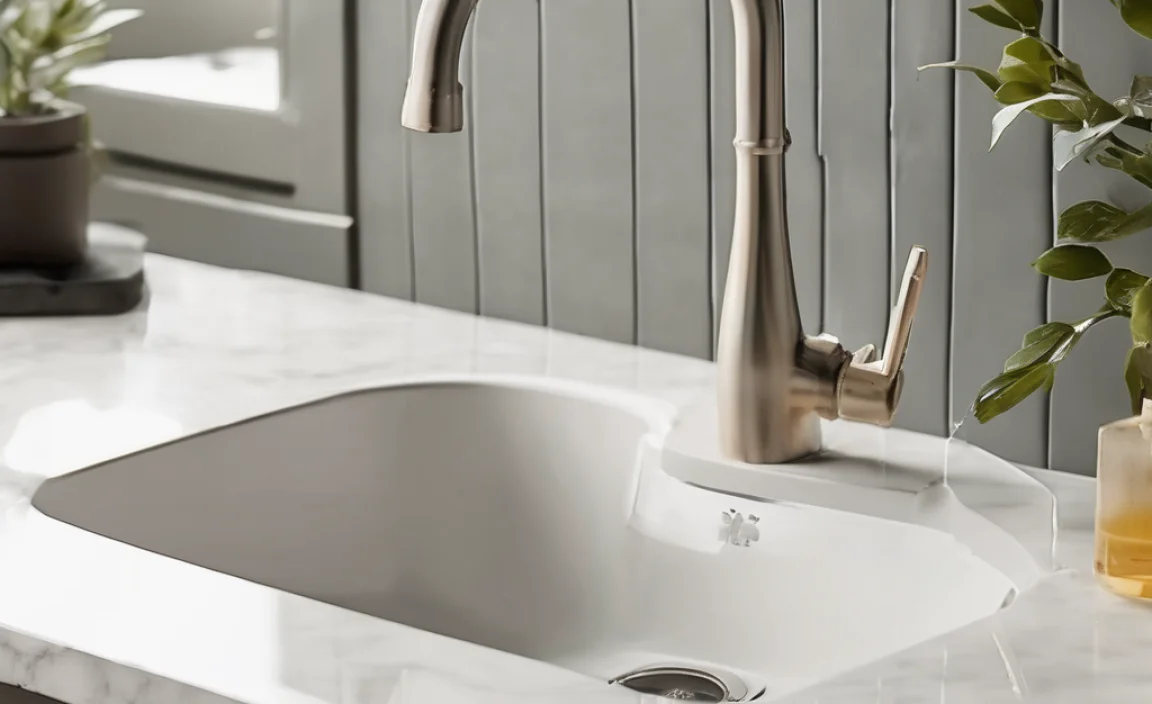
Follow these steps carefully for the best results. Remember to read the instructions included with your refinishing kit, as specific steps may vary.
Step 1: Prepare the Area
First things first, protect your workspace. Lay down a drop cloth to catch any drips or spills. Use painter’s tape to carefully mask off the surrounding countertops, faucets, and any other areas you don’t want to get paint on.
Step 2: Clean the Sink Thoroughly
A clean surface is essential for proper adhesion. Use a heavy-duty cleaner and a scouring pad to scrub the sink thoroughly. Remove any soap scum, grease, or stains. Rinse well with water and dry completely. Next, wipe down the whole sink with a tack cloth to get rid of any remaining dust or particles.
Step 3: Repair Any Damage (Optional)
If your sink has any chips or cracks, now’s the time to fix them. Use a filler specifically designed for this purpose. Follow the manufacturer’s instructions to apply the filler, let it dry completely, and then sand it smooth with 220-grit sandpaper.
Step 4: Sand the Sink
Sanding helps create a rough surface for the new finish to grip onto. Start with 80-grit sandpaper to remove the old finish and smooth out any imperfections. Then, use 220-grit sandpaper to further smooth the surface. Finally, use 400-grit sandpaper for a final sanding to prep for the primer. Be sure to wear your safety mask and glasses. Wipe away sanding dust with a tack cloth after each sanding.
Step 5: Apply Primer
Most refinishing kits include a primer. Apply a thin, even coat of primer to the entire sink surface. Use a foam roller or brush, as recommended by the kit instructions. Let the primer dry completely according to the manufacturer’s instructions. This step is crucial for ensuring the topcoat adheres properly.
Step 6: Apply the First Coat of Refinishing Paint
Now for the main event! Carefully mix the refinishing paint according to the kit’s instructions. Apply a thin, even coat to the sink using a foam roller or brush. Work in smooth, overlapping strokes. Avoid applying too much paint at once, as this can lead to drips and runs. Let the first coat dry completely, as directed by the kit.
Step 7: Sand Lightly and Apply Additional Coats
After the first coat is completely dry, lightly sand the surface with 400-grit sandpaper. This will help the next coat adhere better. Wipe away any sanding dust with a tack cloth. Apply a second coat of refinishing paint, using the same technique as before. You may need to apply a third coat, depending on the kit instructions and the desired level of coverage. Allow each coat to dry completely before sanding and applying the next.
Step 8: Remove the Tape and Clean Up
Once the final coat is completely dry, carefully remove the painter’s tape. Be careful not to chip the new finish. Clean up any spills or drips. Dispose of used materials properly. Consider using a mild cleaner to wipe down the sink one last time.
Step 9: Allow the Sink to Cure
This is the most important step! Allow the refinished sink to cure completely before using it. This usually takes 24-72 hours, depending on the refinishing kit. Check the manufacturer’s instructions for the exact curing time. Avoid using the sink during this time to ensure the finish hardens properly.
Choosing the Right Refinishing Kit
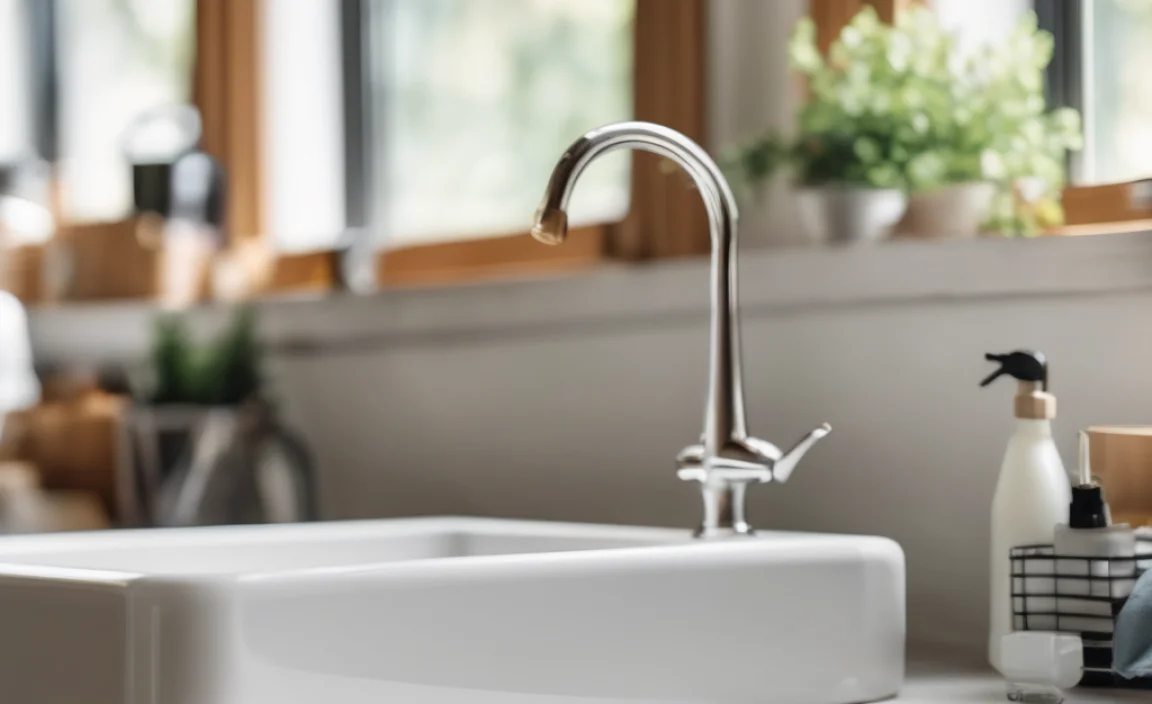
Not all refinishing kits are created equal. Here’s what to look for when choosing a kit for your sink:
- Type of Material: Epoxy and acrylic-urethane kits are the most common. Epoxy is very durable and chemical-resistant, but it can be more difficult to apply. Acrylic-urethane is easier to apply and dries faster, but it may not be as durable as epoxy.
- Coverage Area: Make sure the kit provides enough paint to cover your entire sink.
- Ease of Use: Read reviews to see how easy the kit is to use. Look for kits that come with clear instructions and all the necessary tools.
- Durability: Check the manufacturer’s claims about durability and resistance to chipping, scratching, and staining.
- VOC Content: Consider the volatile organic compound (VOC) content of the kit. Low-VOC kits are better for your health and the environment.
Safety First!
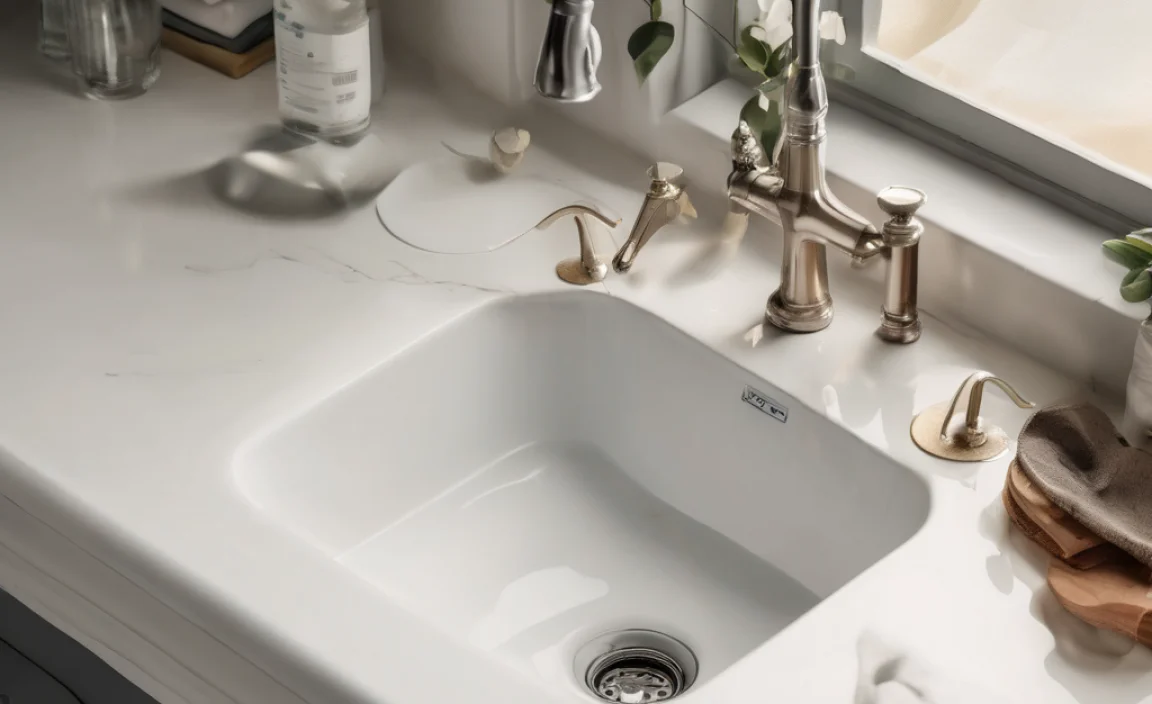
Refinishing a sink involves working with chemicals, so it’s important to take safety precautions:
- Ventilation: Work in a well-ventilated area. Open windows and use a fan to circulate air.
- Respirator Mask: Wear a respirator mask to protect yourself from inhaling harmful fumes.
- Gloves: Wear gloves to protect your skin from chemicals.
- Eye Protection: Wear safety glasses to protect your eyes from splashes.
- Read Instructions: Always read and follow the manufacturer’s instructions for the refinishing kit.
Maintaining Your Refinished Sink
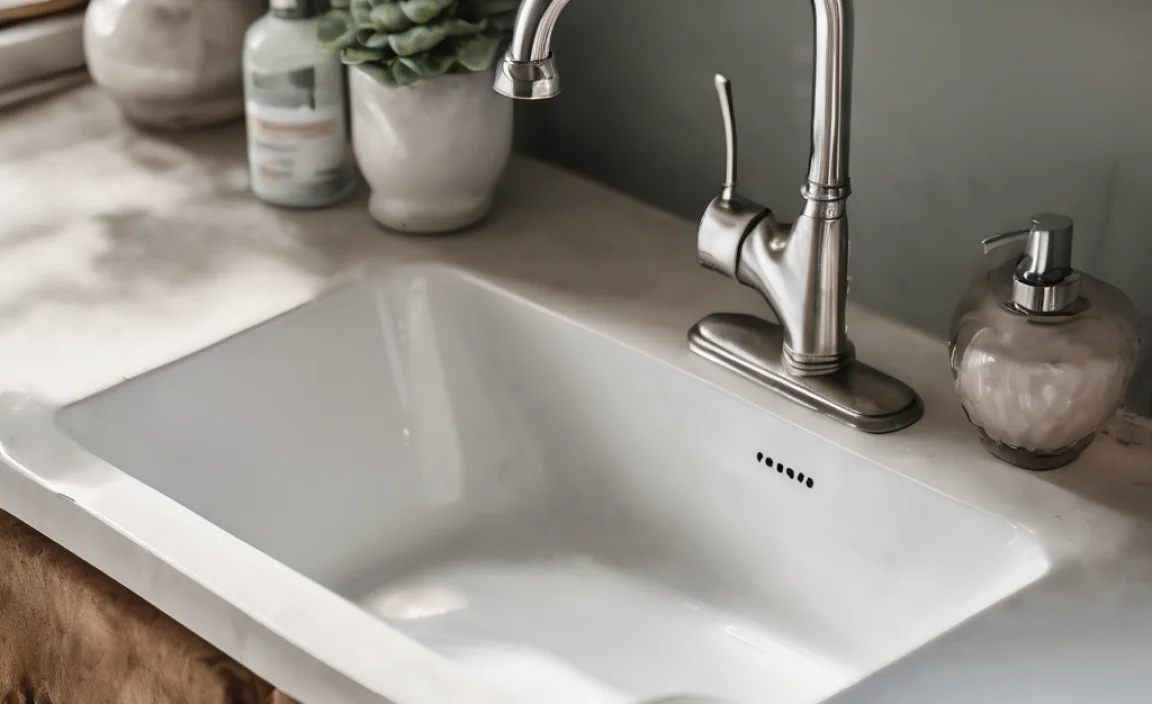
To keep your refinished sink looking its best, follow these tips:
- Use Non-Abrasive Cleaners: Avoid using harsh abrasive cleaners, as they can scratch the finish.
- Avoid Dropping Heavy Objects: Dropping heavy objects into the sink can cause chips or cracks.
- Rinse After Use: Rinse the sink after each use to prevent soap scum and stains from building up.
- Use a Sink Protector: Consider using a sink protector to prevent scratches and damage.
Troubleshooting Tips
Even with careful preparation, you might encounter some issues during the refinishing process. Here are some common problems and how to fix them:
- Drips and Runs: If you get drips or runs, let the paint dry completely. Then, sand the area smooth with fine-grit sandpaper and apply another thin coat of paint.
- Bubbles: Bubbles can occur if the paint is applied too thickly or if the surface is not properly prepared. To fix bubbles, let the paint dry completely. Then, sand the area smooth and apply another thin coat of paint.
- Peeling: Peeling can occur if the surface is not properly cleaned or sanded. To fix peeling, remove the loose paint. Then, clean and sand the surface and apply a new coat of primer and paint.
- Uneven Finish: An uneven finish can occur if the paint is not applied evenly. To fix an uneven finish, lightly sand the surface and apply another thin coat of paint.
Cost Comparison: Refinishing vs. Replacing
| Option | Cost | Pros | Cons |
|---|---|---|---|
| Refinishing | $50 – $200 (DIY) | Affordable, eco-friendly, less disruptive | Requires time and effort, may not last as long as a new sink |
| Replacing | $200 – $1000+ (including installation) | New look, can increase home value | Expensive, requires plumbing work, more disruptive |
Types of Sinks You Can Refinish
Refinishing works best on certain types of sinks. Here’s a quick guide:
| Sink Type | Refinishable? | Notes |
|---|---|---|
| Porcelain | Yes | Common and usually successful. |
| Cast Iron | Yes | Durable and worth refinishing. |
| Acrylic | Yes | Use a kit specifically for acrylic. |
| Stainless Steel | No | Refinishing is not typically recommended. |
| Composite | Maybe | Check with the refinishing kit manufacturer. |
How to Choose the Right Color
Picking the right color can breathe new life into your bathroom or kitchen. Here are some tips:
- Match Existing Décor: Choose a color that complements your current countertops, cabinets, and flooring.
- Consider Neutral Tones: White, off-white, and light gray are classic choices that work well in most bathrooms and kitchens.
- Think About Light: Lighter colors can brighten up a small or dark space.
- Get Samples: Before committing to a color, test it out in your space to see how it looks in different lighting conditions.
- Use Color Visualizer Tools: Many paint companies offer online tools that allow you to virtually “paint” your bathroom or kitchen to see how different colors will look.
Resources for Further Reading
Want to learn more about sink refinishing? Check out these helpful resources:
- Environmental Protection Agency (EPA): Information on safe disposal of chemicals.
- The Family Handyman: Step-by-step guides on home improvement projects.
- HGTV: Design ideas and home improvement tips.
FAQ: Refinishing Your Sink
Q: How long does it take to refinish a sink?
A: It usually takes a weekend to refinish a sink, including prep time, application, and curing time.
Q: Is it cheaper to refinish a sink or replace it?
A: Refinishing is almost always cheaper than replacing a sink, often saving you hundreds of dollars.
Q: Can I refinish a stainless steel sink?
A: Refinishing isn’t typically recommended for stainless steel sinks because the finish doesn’t adhere well.
Q: How long does a refinished sink last?
A: A properly refinished sink can last for several years with proper care and maintenance.
Q: Do I need to hire a professional to refinish my sink?
A: No, refinishing a sink is a DIY project that most homeowners can handle with the right tools and instructions.
Q: What if I mess up the refinishing process?
A: Don’t worry! You can sand down the area and start over. It might take a little extra time, but you can fix most mistakes.
Q: Can I use any type of paint to refinish my sink?
A: No, you should only use refinishing kits specifically designed for sinks to ensure proper adhesion and durability.
Conclusion
Refinishing your sink is a fantastic way to give your bathroom or kitchen a fresh, new look without breaking the bank. It might seem like a daunting task at first, but with a little patience and attention to detail, you can achieve professional-looking results. Remember to take your time, follow the instructions carefully, and prioritize safety. So, gather your supplies, roll up your sleeves, and get ready to transform your old, tired sink into a sparkling centerpiece. You’ve got this!



